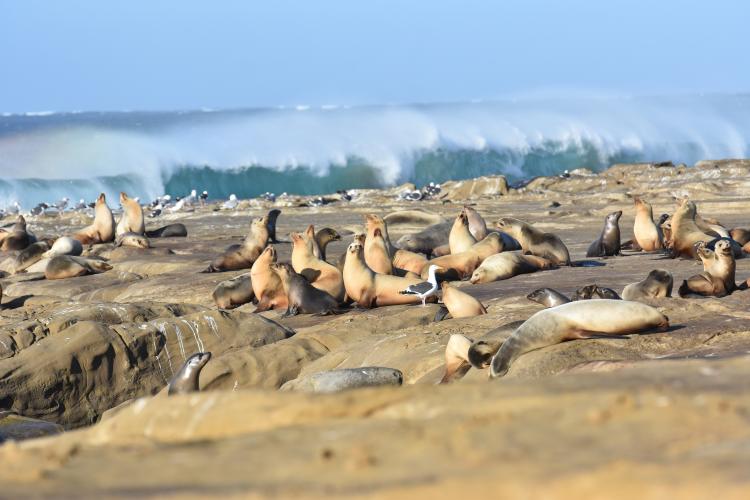An ecosystem indicator is an organism that can provide information on the direction and magnitude of ecosystem stressors, such as climate change. California sea lions are outstanding ecosystem indicators because they consume a variety of forage species. Changes in their diet over time can be linked to changing ocean conditions that affect the availability of their prey species. These shifts in diet may affect sea lion body condition, reproductive success, and survival of the population.. These linkages also help resource managers better understand competition between sea lions and humans and predict the impacts the species may face from commercial fisheries.
California Sea Lions in the Southern Channel Islands
The Channel Islands in the Southern California Bight are an important nursery area for several key pelagic forage species and top predators, such as the California sea lion. California sea lions are protected under the Marine Mammal Protection Act, and have grown in number since 1972. They consume a wide variety of prey, but most commonly feed on market squid, anchovy, shortbelly rockfish, jack and Pacific mackerel, Pacific sardine, and Pacific hake.
Using Poop to Study Sea Lions
For more than 40 years, biologists at the NOAA Fisheries Southwest Fisheries Science Center have been collecting California sea lion diet information from these Channel Islands rookeries. They do this by collecting scat (yes, poop!). Scientists have collected more than 20,000 samples that have helped them learn that California sea lions have the ability to switch between prey species based on availability. This makes them more resilient to impacts from climate change.
Since 1981, biologists have identified 142 prey species from these sea lion scat samples . The diet of these sea lions varies between islands, seasons, years, and sexes. For example, during the summer breeding season, adult females primarily feed on energy-rich coastal pelagic prey species such as anchovy and sardine. In winter their diets are dominated by market squid, following seasonal prey availability.
The results of this long-term study have important applications to forage fish stock assessment, ecosystem-based management, and improving our understanding of how species in the California Current Ecosystem respond to climate change. The NOAA Fisheries Southwest Fisheries Science Center and partners have efforts underway to use these data in ecological studies, stock assessment science, and to improve ecosystem models for climate change forecasting.
Learn more about this study as well as the California Current marine mammal stock assessment program.




